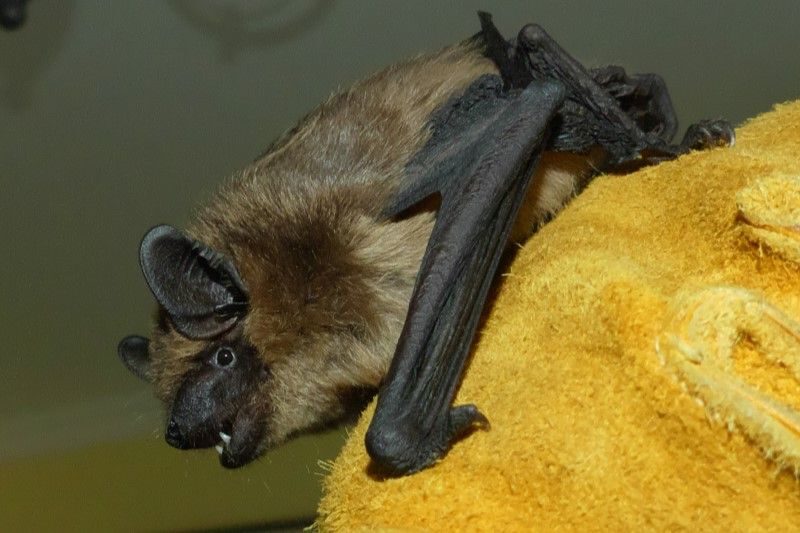Serotine bat

Status
Native and widespread in Southern England
Population
136,000
Scientific name
Epitesicus serotinus
Serotine bats are one of the largest bats in Britain. They have dark brown fur, which is paler on the underside and on their faces, and very dark ears. They make extensive use of buildings and are thought to roost in them almost all year round, making them vulnerable to disturbance during building work. Serotines can often be heard squeaking loudly just before they emerge at dusk. They generally feed in woodland habitats and their long, broad wings enable them to manoeuvre skillfully amongst the trees and to dive quickly to catch flying insects. They also feed around street lamps or snatch insects from leaves or the ground.
Wingspan: 32 – 38cm
Weight: 15 – 35g
Lifespan: Up to 20 years
Reproduction
Females begin to gather in May to form maternity colonies and usually a single pup is born in early July. The young usually make their first flight at about three weeks and can forage for themselves by six weeks. The colony usually disperses in early September.
Diet
Flies, moths, chafers and dung beetles.
Habitat
Pasture, open woodland edge, tall hedgerows and suburban areas.
Summer roosts
Mainly houses and older buildings that have ready access to roof spaces or wall cavities. They are rarely found in trees.
Winter roosts
It is likely that most serotine bats hibernate in buildings, in wall cavities or disused chimneys, for example.
Predators
Occasionally owls but no regular predators known.
Threats
Loss of foraging habitat; and disturbance of roosts in buildings.
Ultrasound
Echolocation calls range between 15 – 65kHz, with a peak at about 28kHz. On a bat detector, the calls have a ‘tock-tock-tock’ sound, like irregular hand-clapping.
Status and conservation
GB Red List: Vulnerable (VU).
Population size and distribution
GB population 136,000. The population has probably changed little in the last 10 years but there are indications that their range is increasing. Most records are south of a line from the Wash to South Wales. They are absent from Scotland and Ireland.
Did you know?
Serotines are able to eat large insects while in flight, manipulating the insect in their jaws and chewing off the hard wing-cases, which are dropped to the ground.
Header image credit Surrey Bat Group
